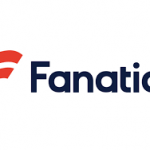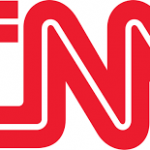Q: How did you start in the retirement plan business?
A: In the early 90’s I was a full time musician which tells you I needed money… Was hired as a temp at Bank of American Retirement Services – I guess I had a knack for it and they offered me a full time position and sponsored me for the Series 7 license.
Q: You were one of the leaders behind 401k ASP, now ASPire. How did you come up with the idea of fee transparency as a TPA all the way back in 1999?
A: It was simply the right thing to do — especially when the “free 401(k) plan ” was actually more expensive. It was an uphill battle at times promoting a transparent fixed fee for service and having to demonstrate it was in the best interest of participants but it was the right approach and resonated with the advisor we wanted to work with.
Q: After 401k ASP, you started working in the 403(b) space. How is that business compared to the 401(k) plan business?
A: I will start by sharing a joke amongst some of my colleagues — The 401(k) and 403(b) markets have 2 things in common… a 4 and a 0.
I actually began working in the 403(b) market when I was at Schwab in the 90’s and built their 403(b) program. At the time I thought what a crazy market… but I guess that it was intrigued me about it. The 403(b) space has 5 market segments (Healthcare | Higher Ed | K-12 | Non-Profit | Faith-based) that have some similarities but behave differently depending on design. The two biggest factors of how 403(b) plan behaves is driven by 1) ERISA versus Non-ERISA and 2) whether it is a single-provider versus a multi-provider environment. The segments that have an ERISA single-provider design tend to resemble the 401(k) market — Non-Profit and Faith-Based (when adopting ERISA) typically fall into this category – by not exclusively. Healthcare and Higher Ed tend to be ERISA (except for public Higher ED) and have an average of 2-3 investment providers but the market is shifting to more of a single-provider. The K-12 market is predominately a multi-provider space due to decades of history and some large states that have “any willing vendor” regulations. To be sure the 403(b) market across all of it segments is far more complex due to its “flexibility” and conditional regulations… which in the end creates a new set of opportunities.
When I was at Aspire (formally 401k ASP) I saw an opportunity when the regulatory change for 403(b) hit in 2009 that impacted the multi-provider k-12 market. At that time the market had a mass exodus of traditional mutual fund companies exiting the space because not wanting to comply with information sharing agreements or the onset TPA services fees that were introduced. The solution presented was to offer an open architecture platform that retained access to the providers leaving the space (in a direct capacity) and allow for the appoint of an advisor to an individual account within a Plan – while also complying with information sharing agreements an remitting TPA fees. This approach was very successful and really was the prototype of the Investment Provider Xchange (IPX) platform that has been developed over the last four years (under FPS Group, my current company) to uniquely serve the multi-provider market.
Q: When it comes to non-ERISA 403(b), one of the problems is school district have multiple vendors with high fees. How did you resolve that problem?
A: Solving the problem with multi-provider plans in the K-12 wasn’t so much a questions of “high fees” as much as compliance/governance in more of a unified user experience that adapts to the needs of each audience in the Plan. To solve the K-12 multi-provider “problem(s) you have to look at the history of the market.
Market Background – Prior to 2007
Prior to 2007, the typical 403(b) plan had multiple recordkeepers, hundreds of investments (403(b) allows for fixed annuities, variable annuities, and registered mutual funds held in custodial accounts – all of which are considered 403(b) eligible products). Choice was considered paramount and it was common to have all the investment providers’ investment products available in the plan. Plans were often referred to as the investment providers name not the name of the sponsoring employer. While several States had statutes that require employers to add providers when employees requested, even those that did not, typically added investment providers at the employee’s request. There was little to no oversight on the plans, recordkeepers, or investment menus. Investment menus – 403(b) plans typically had in excess of 100 to 300 investment options correlated to the administrative provider and were typically proprietary in nature with various participant services specific to their business model. Insurance companies typically offered fixed and variable annuities and mutual fund firms offered 40 Act funds with multiple share classes even within the same plan. An incremental complication was the presence of individual contracts where only the participant has discretion over their accounts. Recordkeeping – Multiple recordkeepers were commonplace. Employees were required to select a provider before selecting investments. Providers typically offered either a direct or advice thru a local advisor service model.
Market Background – After 2009
With the IRS Final 403(b) regulations plan sponsors were forced to provide a higher level of oversight and governance than they had provided in the past. Multiple options to address this increased oversight emerged in the marketplace. It should be noted that most experts agree that at least 50% of Non – ERISA 403(b) plans are not in compliance today.
- Consolidate recordkeepers or select a single recordkeeper. (<5%)
- Increased use of Third Party Administrators or Provider Spark Aggregation tools. (<50%)
- Increased use of consultants and third party investment advisors. (<20%)
It is important to remember that legacy providers, which includes those deselected due to recordkeeping consolidation, are still viewed as part of the plan by the IRS. Therefore, a move to a single recordkeeper is not possible under the final regulations.
Market Background – Current
The final regulations created an environment where current solutions are failing. The plan sponsor is still challenged by compliance and complex data consolidation requirements in addition to strategic plan level data requests to improve oversight and governance. Plan Sponsors do not know who is in their district marketing products and do not know what products they are marketing. This has led to most plan sponsors not adding investment providers to payroll slots.
One of the largest Independent K-12 Administrators (TSA Consulting Group) has tracked ~500 plan sponsors who have reduced vendors in an ill guided attempt to improve oversight and governance while improving participation. In those 500 cases, not one employer has improved participation in the absence of automatic enrollment, but rather, have experienced decreased participation in the 15% to 60% range. In addition, many consolidations resulted in a plan having similar 403(b) eligible products and participant service approaches. Given the failure of current solutions, IPX was developed to provide a new ecosystem in which all key players in the 403(b) marketplace can be advantaged by replacing a fragmented construct and simplifying the experience for all involved. IPX provides a single platform supporting multiple investment providers wherein plans may offer all 403(b) eligible products utilizing both a direct and advice driven options for participant services. This allows employees true “choice” in their 403(b) plan.
So what I’m solving for is not really high fees (but school districts are taking a closer look at fees) but a better environment for multi-provider plans. The Investment Provider Xchange (IPX) platform provides employers the flexibility of a multi-provider platform in addition to the administrative efficiency of the single provider model. IPX addresses the operational needs of investment product providers and their distribution channels. IPX also offers employers the flexibility and control to access approved investment provider options and to work with designated financial advisors to improve employee education and participation. Coupled with a centralized recordkeeping platform, IPX’s reporting system provides employers with consolidated Plan information, leading to more streamlined operations with audited compliance oversight.
Q: You’re now involved with HSAs (Health Savings Accounts), what do plan participants and financial advisors not understand about them?
A: I became interested in the HSA space about seven years ago and FPS Group currently provides technology and custody services for approx. 70K accounts and $600M in assets. HSAs are clearly the best tax advantage health/wealth account type for retirement savings and recently the awareness of how HSA actually work and the significant advantages of them are now being embraced by participants and financial advisors.
Q: How has Affordable Care Act impacted your business and what will be the impact of it, if it’s replaced?
A: The ACA was a driver of the expansion high deductible plans (HDP) which carry an HSA component and the proposed “repeal & replace” legislation is geared towards increasing “consumer driven healthcare” and seeks to expand HSA contribution limits with other changes that favor the HSAs – so far the future of HSAs is looking very favorable.
Q: Has investing in HSAs by plan participants caught on?
A: It seems to finally started to take hold – a recent study found that 40% of HSA account holders are saving/invest their accounts for future healthcare related expenses. The HSA accounts we service are tilted toward investors more than spenders but I think there will always be a mix of “investors” versus “spenders” – driven by personal circumstances and age bands… but the idea of HSAs are like FSAs is rapidly being eroded.
Q: How has fee disclosure regulations impacted your business?
A: When you have been performing fee disclosure as a standard practice for years the new regulations have a minor impact.
Q: Why should advisors get more involved with HSAs?
A: We have done a lot of work getting advisors involved with the HSA space over the last few years. Not only do we provide the fundamentals of what they are, how they work, but how to incorporate them in your practice. The convergence of health & wealth as a holistic retirement plan is a no brainer. Advisors that do not engage will see that to be competitive they must add HSAs to their employer sponsored retirement plan practice as well as their individual wealth management practice – HSAs are the new anchor account and if they are not involved with them today they will be tomorrow.
Q: Where can people find out more information about your company?
A: The best way is to email me (james@fps-services.com) or you can visit www.fpsgroupllc.com







